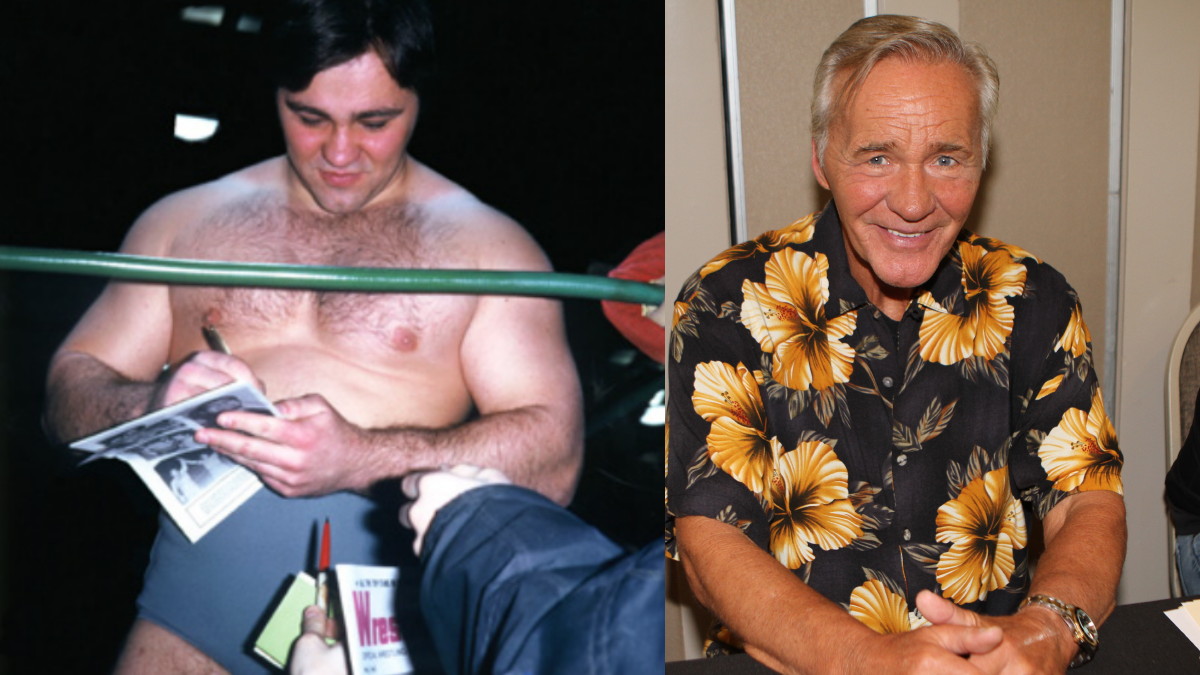Zbyszko leaves reader wanting more
Larry Zbyszko, like a definitive showman, leaves his audience craving more in his 192-page self-penned memoir Adventures in Larryland!
For someone who proclaimed himself the “Living Legend,” one might expect the former Larry Whistler to divulge every detail about himself. Sadly for the reader, Zbyszko tantalizes but then withdraws. He provides very few details about his personal life, giving only a glimpse of his childhood, (a time he dreamt of one day becoming a hero in the mold of Superman, The Lone Ranger and Zorro), and little else about the real Larry Zbyszko.
Merely mentioning his amateur wrestling and martial arts training, Zbyszko soon jumps to his association with Bruno Sammartino. Zbyszko writes about stalking Sammartino in Pittsburgh, noting with affection how his hero mentored him and helped launch his career. His genuine status as Sammartino’s protégé allowed Zbyszko to avoid the brutality of wrestling’s “policemen,” those who governed the profession by beating up wannabes to keep them out of their secret society.
His angle with Sammartino in the World Wide Wrestling Federation (WWWF) and the heat it generated highlighted Zbyszko’s career about six years after it started. Their blow off match at Shea Stadium turned into a massive triumph with its record attendance, thanks in large part to Sammartino’s stirring promos and the fans’ desire to see him get his revenge on the prodigal son character Zbyszko played. (Zbyszko would go on to make a career out of convincing people he was a big jerk.)
By contrast to the attention he pays to his collaboration with Sammartino — which takes up about a third of the book — Zbyszko’s stints in the American Wrestling Association (AWA) are practically glossed over. The main achievement he does dwell on is winning the AWA Heavyweight Championship, an accomplishment that he compares to Sammartino’s long title runs, even though Zbyszko’s reign came at a time when the AWA was a dying territory. (Zbyszko does not even mention that AWA owner Verne Gagne likely put the belt on him because as Gagne’s son-in-law, Zbyszko could be relied on to stay with the company instead of running off to the WWF as many AWA stars had done.)
The story takes a turn when Zbyszko decides to hang up his boots after 20 years on the road. He gets thrust into the role of colour commentator when World Championship Wrestling (WCW) chooses not to re-sign Jesse “The Body” Ventura. But Zbyszko’s recollection of his own importance again seems somewhat exaggerated when he credits his in-ring appearances at the 1997 Starrcade (versus Eric Bischoff), and 1998 Souled Out (versus Scott Hall) pay-per-views for producing the largest buy-rates in WCW history.
From his position in the announcing booth, Zbyszko gives his take on the changing wrestling industry, lamenting a business dominated by steroid enhanced clothesline happy hacks. He also mourns the misuse of William Regal, whom he knew as Steven Regal, and considers a natural heat getter and a quality, old school wrestler.
Zbyszko’s memoir, published by ECW Press, is enjoyable, and one can clearly hear his voice as he treats the reader with his sardonic wit and amusing reminisces about the ribs, the fans and Verne Gagne. But at times, it is a frustrating telling, in that, Zbyszko fails to flesh out the images that would make one feel like one was there alongside him, watching these historic events unfold. Zbyszko keeps many of the doors to his memory locked as he often provides only cursory descriptions of his life in professional wrestling.




